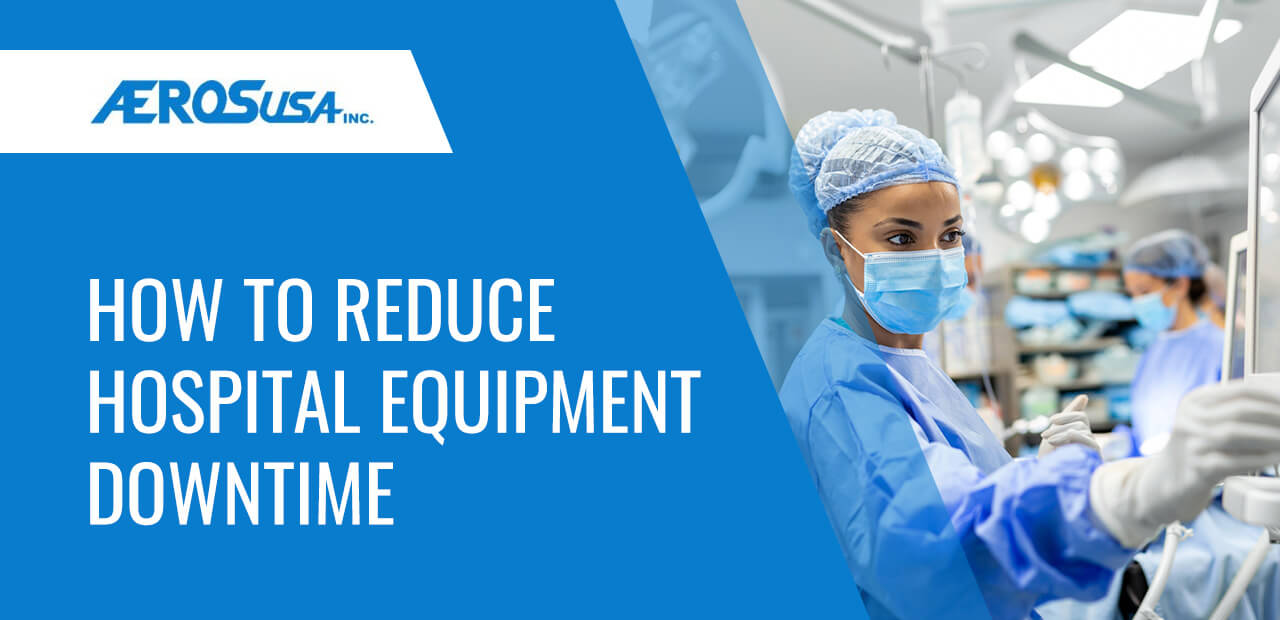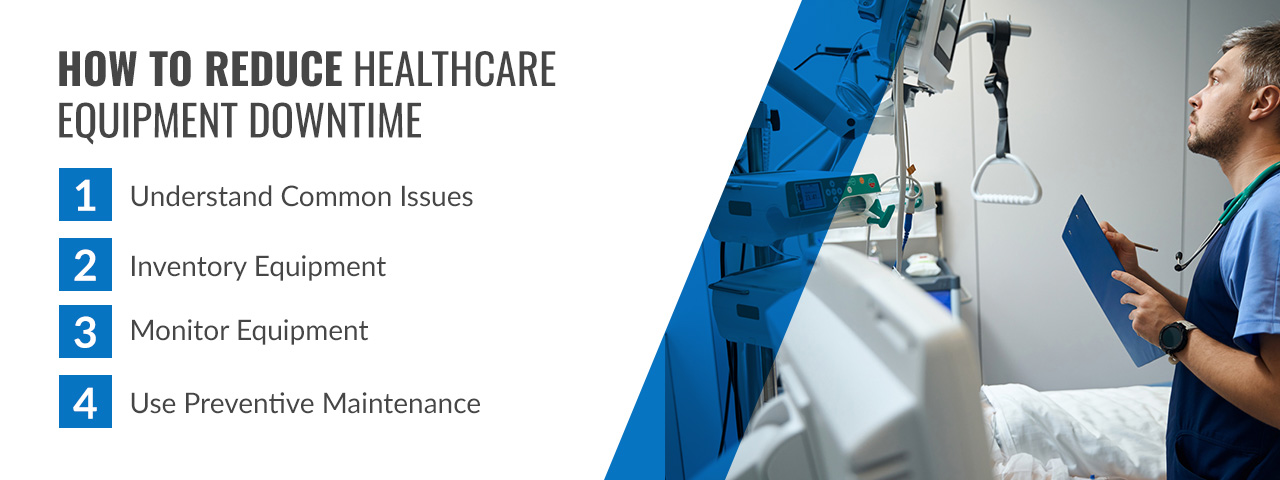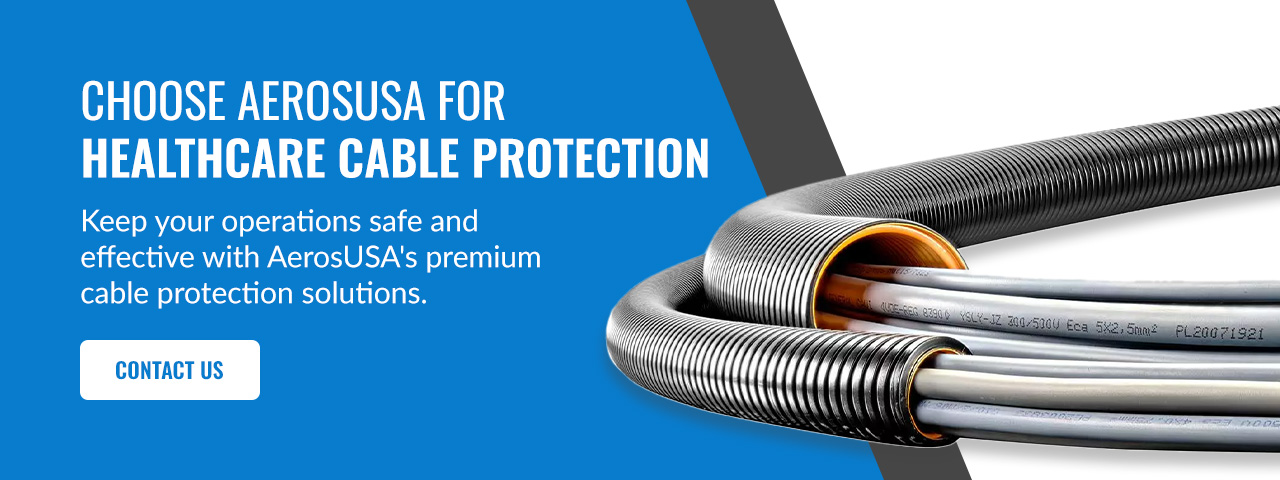
Hospitals depend on their equipment to protect patients, records and financials. When your hospital equipment goes down, you start seeing expensive delays and dangerous safety risks. Just a few minutes of equipment failure can be life-threatening for patients.
Hospitals need to invest in durable equipment and effective downtime management to provide uninterrupted service to everyone inside the facility. With the right strategies, you can minimize healthcare equipment downtime.
Table of Contents
Why Is Reducing Hospital Equipment Downtime Important?
Hospitals are critical for saving patient lives and protecting their data. Everyone who enters a hospital depends on its equipment to get their jobs done or their health restored. Hospital equipment must be in top condition to:
- Save lives: Medical equipment failures put patient lives at risk. Ventilators, imaging machines and other lifesaving devices must work correctly at all times. A single failure can lead to downtime, delaying critical care. Hospitals rely on their systems to ensure high-quality care at all times.
- Protect revenue: In 2022, over half of hospitals operated at a loss by the end of the year. Unplanned downtime delays procedures, reducing patient turnover rates. Every minute equipment is down represents revenue lost for a hospital.
- Maintain compliance: Hospitals must follow patient and equipment care standards set by groups like The Joint Commission and the FDA. Noncompliance with equipment regulations can lead to fines and loss of certifications.
How Hospitals Are Different From Other Buildings
Hospitals differ from other buildings that use equipment to meet deadlines or complete jobs. A hospital is a high-stakes environment that depends on every system to deliver 24/7 care. Most commercial facilities have few departments and limited operating hours. Hospitals, on the other hand, have much more complex demands for their equipment and buildings.
Complex Departments
Hospitals have multiple specialized departments, each with its own regulatory requirements and operating protocols. Surgical suites and imaging labs have separate standards from emergency rooms. Each area has its own guidelines for maintenance, operation and cleaning. Failure to meet these standards can compromise patient safety and violate medical regulations.
24/7 Operation
Hospitals operate 24/7, leaving no room for downtime. Other offices can schedule maintenance during off-hours, but hospitals must run continuously. Critical systems like power, temperature control and data infrastructure need to be maintained without disrupting patient care. Lives depend on hospitals being accessible at all times. These unique requirements mean hospitals need to use predictive strategies and durable materials to keep everything running smoothly.
Critical Services
Most importantly, patient lives depend on hospital infrastructure. Failing ventilators put patients in life-threatening situations. If the power supply is unstable, equipment and computers cannot run. While most industries lose revenue or productivity during downtime, hospital equipment failures can have severe consequences for patients.
How to Reduce Healthcare Equipment Downtime
Working to reduce hospital equipment downtime means planning ahead. Hospitals have lives depending on them — you need to build effective strategies to protect patients and revenue. Once you understand the risks and implement the best approach for dealing with them, you can make sure operations are uninterrupted.

1. Understand Common Issues
Break down your equipment failure. What are the most common causes of equipment downtime? Knowing these factors helps you create practices that keep equipment working. Common equipment issues include:
- Old components: It’s easy to keep using old equipment that works to avoid spending money on upgrades. However, old equipment can be slower or prone to sudden failures. Damaged or tangled cables can cause power disruptions and connectivity issues. Avoid using equipment that’s older than recommended.
- Poor maintenance: Some facilities try to cut corners with healthcare building maintenance, reducing short-term downtime. Wear and tear eventually catch up with equipment, leading to extended downtime and expensive repairs.
- Human error: Improper use or calibration mistakes might cause downtime. Humans make errors, so ensure your teams receive regular training.
- Environmental wear: Humidity, electrical surges and changing temperatures can damage equipment. Hospitals should monitor their environments closely to prevent these problems.
- Installation issues: Poor installations lead to long-term performance issues. Everything must be installed correctly to avoid regular downtime.
2. Inventory Equipment
Once you know your facility’s most common issues, you need to take inventory. Hospitals have thousands of devices — imaging machines, ventilators, surgical tools and other devices are all essential for supporting patient care. Take an accurate equipment inventory, tracking maintenance schedules and at-risk systems.
Put everything into a database. This way, it’s easy to find devices, their performance history and manufacturer guidelines. Next, properly label and store components, like cables and connectors, to make sure replacements are ready to access.
3. Monitor Equipment
After breaking down what your hospital has on hand and your equipment’s performance, you need to monitor everything regularly. Healthcare facilities track performance, temperatures, usage and errors with management systems. These systems send alerts when equipment is working outside its intended parameters.
Technicians can intervene before equipment fails, keeping everything well-maintained and monitored. Use software to track equipment patterns, spotting issues before they lead to emergency replacements. The more you know and monitor, the fewer unexpected failures your hospital will see.
4. Use Preventive Maintenance
Waiting for equipment to fail leads to expensive, dangerous hospital downtime. Preventive maintenance is key for keeping equipment in peak condition without extended downtime. Your facility should invest in:
- Regular inspections
- Software and firmware updates
- Part replacements
- Performance testing
- Environmental monitoring
Investing in Cable Protection for Hospital Equipment
To keep healthcare equipment running, you need to address your cables. Cables and wiring connect your critical equipment to power sources. When cables fail, it can leave your lifesaving devices inoperable. Hospitals should invest in durable cable protection to keep power disruptions and physical damage from affecting their cables. Cable protection and organization:
- Reduces wear: Proper cable management prevents fraying, bending and disconnections.
- Prevents failures: Signal interference, physical damage and power disruptions can shut down critical devices.
- Protects equipment: Dust, electromagnetics and moisture can degrade cable performance, leading to sudden failures.
- Extends equipment life: Shielding solutions and other protective mechanisms keep cables in good condition, reducing maintenance and replacement needs.
Choose AerosUSA for Healthcare Cable Protection
When patient lives are on the line, equipment downtime isn’t an option. Investing in high-quality cable protection is critical for supporting uninterrupted device performance. AerosUSA offers durable, industry-leading cable management solutions designed to withstand healthcare’s demanding conditions.
With a full range of flexible conduit, strain relief fittings and shielding solutions, AerosUSA helps hospitals prevent disruptions. Our products meet strict industry regulations while providing superior protection against moisture and electromagnetic interference.
Keep your operations safe and effective with AerosUSA’s premium cable protection solutions. Contact us for fast, expert support.


